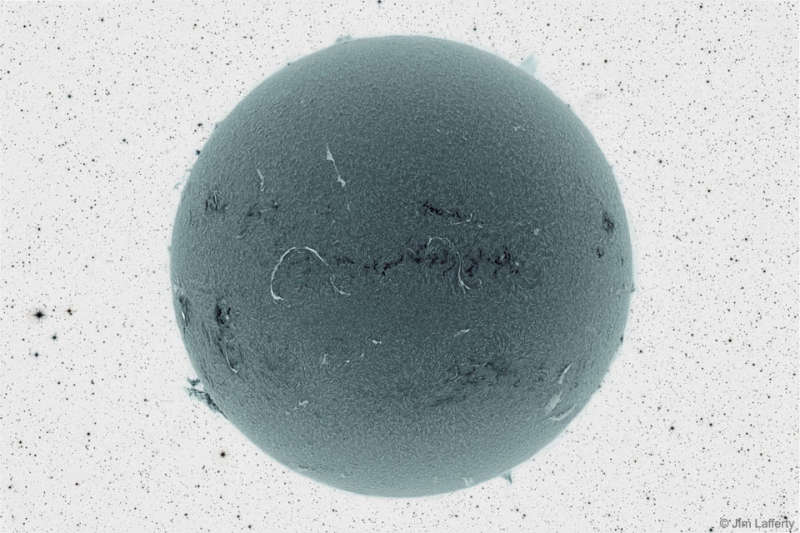
|
Credit & Copyright: Jim Lafferty
Explanation:
Does this strange dark ball look somehow familiar?
If so, that might be because it is our Sun.
In the featured image from 2012, a
detailed solar view was captured originally in a
very specific color
of red light, then rendered in black and white, and then color inverted.
Once complete, the resulting image was added to a
starfield,
then also color inverted.
Visible in the image of the Sun are
long light filaments, dark active regions,
prominences peeking around the edge, and a
moving carpet
of hot gas.
The surface of our
Sun can be a busy place, in particular during
Solar Maximum, the time when its surface
magnetic
field
is wound up the most.
Besides an active Sun being so picturesque, the
plasma
expelled can also become
picturesque when it impacts the
Earth's magnetosphere and creates
auroras.
Compute it Yourself:
Browse 2,900+ codes in the Astrophysics Source Code Library
|
January February March April May June July August September October November December |
| ||||||||||||||||||||||||||||||||||||||||||||||||
NASA Web Site Statements, Warnings, and Disclaimers
NASA Official: Jay Norris. Specific rights apply.
A service of: LHEA at NASA / GSFC
& Michigan Tech. U.
Based on Astronomy Picture
Of the Day
Publications with keywords: Sun
Publications with words: Sun
See also:
- APOD: 2025 July 30 Á Coronal Loops on the Sun
- APOD: 2025 May 21 Á International Space Station Crosses the Sun
- APOD: 2025 March 16 Á Venus and the Triply Ultraviolet Sun
- APOD: 2024 September 2 Á A Triangular Prominence Hovers Over the Sun
- APOD: 2024 August 18 Á A Solar Prominence Eruption from SDO
- APOD: 2024 August 4 Á Gaia: Here Comes the Sun
- APOD: 2024 July 28 Á Sun Dance
